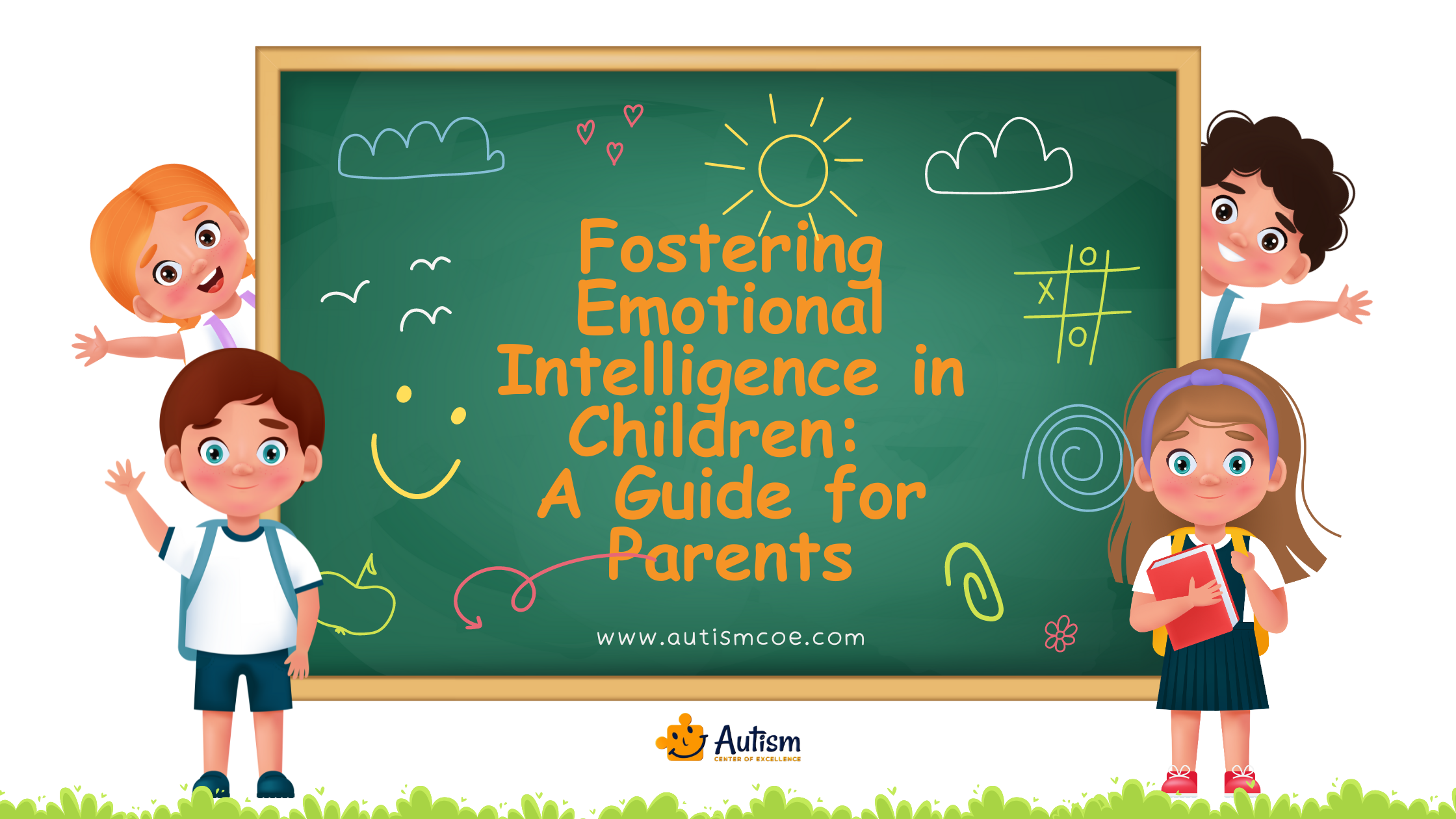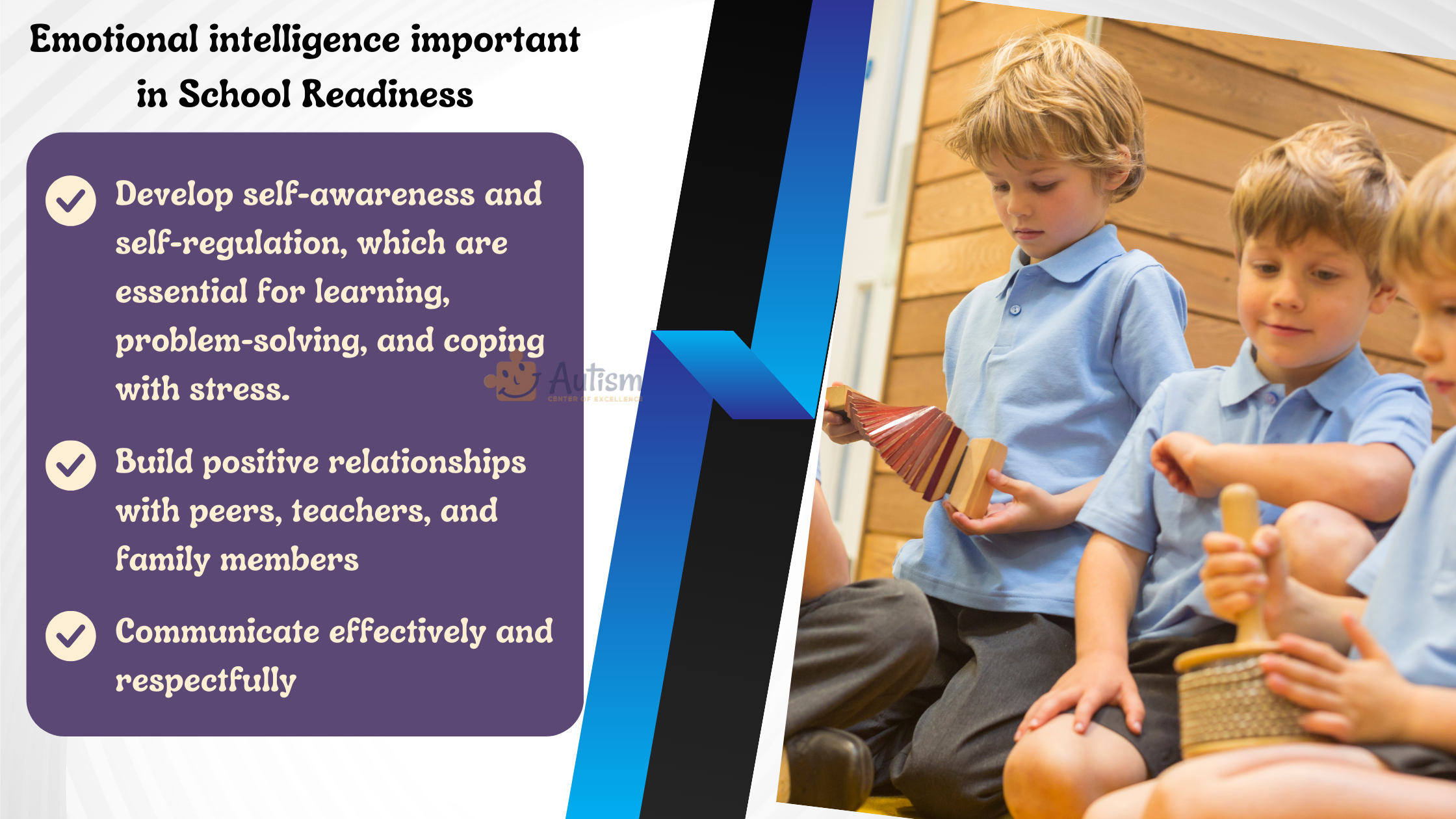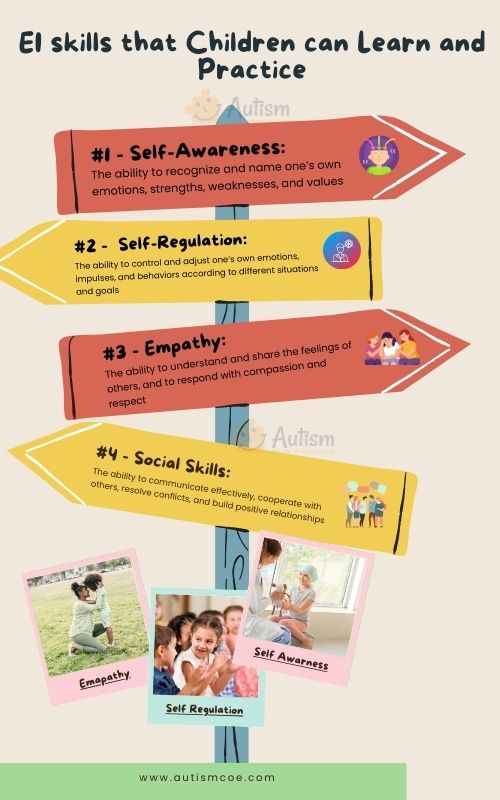Unit 21: Fostering Emotional Intelligence in Children: A Guide for Parents

EI is not just for forming and maintaining good relationships, it is also required by people to deal with stress and to achieve success in life. Kids with high Emotional Intelligence (EI) tend to be more courageous, persistent, sympathetic, and team-oriented. In addition, their behavioral disorder is fewer, tend not to be aggressive, or suffer from depression. On top of this, School Readiness and specifically ABA therapy techniques may, actually, be the major components for the successful development of emotional intelligence in children. Providing EI training to children is one of the most complicated tasks that parents face. Nevertheless, most parents may not be fully aware of how they can support their children, to allow them to acquire self-control. This handbook focuses on the parent’s practical training and methods for the development of EI in children ranging from toddlers to teenagers, including School Readiness and ABA Therapy to strengthen the understanding and development of emotion.
What is Emotional Intelligence
Emotional intelligence (EI) is the capability of recognizing, processing, and checking emotions whether in oneself or towards others, as well as communicating with others with emotions. Even though emotional intelligence (EI) is a skill that is very necessary when children grow up, it helps them handle the challenges of life, build positive relationships, and attain success in their lives.
Social and Emotional Intelligence (EI) has the advantage in the early years of children’s school readiness as well as social and emotional well-being. For example:
- Achieve their educational goals successfully and perform better in academics.
- Maintain engagement and participation in the activities to build up their creativity and problem-solving skills.
- Bring down the stress level and the anxiety among them.
- Boost up their self-image and confidence.
- Help mitigate bullying or reduced aggression among students.
- Make themselves happier and more satisfied.

Why is Emotional Intelligence Important in School Readiness?
Emotional intelligence is important for school readiness because it helps children to:
👉Cultivate self-awareness and self-regulation skills that are foundational for academic performance, problem-solving, and stress management.
👉Develop Strong Relationships with Peers, teachers, and family members, based on trust, respect and compassion.
👉 Convey clearly and pleasantly, both verbally and through body language.
👉 Work on Coping with Complex Feelings and Challenging Situations through Understanding and the Point of View.
Some of the EI skills that Children can Learn and Practice Include:
🧒 Self-Awareness:
The capability to identify and label those emotions, strengths, weaknesses, and self-worth is a crucial factor of self-awareness.
🧒 Self-Regulation:
The capacity to regulate one’s feelings, impulses, and conducts to act appropriately depending on what situation and targeted outcomes are.
🧒 Empathy:
An ability to feel empathy as that is the feeling of realising and sharing the feelings of others as well as responding with compassion and respect.
🧒 Social Skills:
Being able to speak, work, and think in a socially reasonable way in general, interact with others, resolve disagreements, and create good social relationships with people.

What are Some Activities that Promote Emotional Intelligence in Children?
The emotional intelligence is the capacity to realize, comprehend, and control our own feelings while having a perception towards the feeling of others. It’s often referred to as the key to life, as numerous studies have shown. Some activities that promote emotional intelligence in children are:
Pretending to have Emotions:
Different individuals have different ways of manifesting their emotional nature. Thus, the children actually bring to life different facial expressions and movements of the body by representing various states of emotions, such as they try to guess what others feeling by watching them. Also, it can sharpen their skill of communication so that we can all express it at different depths and in different ways.
Play Shower:
This is an activity during which participants will be massaging each other in a manner portraying taking a shower. This demonstrates to children how touching and offering a hug can be a decent way to show that you like them and of course, they can feel the warmth and tenderness of physical contact.
Box of Affection:
This activity involves putting various expressions of love in a box for your loved ones. It can be in the form of notes, pictures, photos, or even small gifts that are stored in the box. It helps children understand the true meaning of giving and receiving love and do so in various exciting modes of self-expression.
Making Faces with Different Emotions:
These methods are very successful among 3-5 preschool children and those with Autism Spectrum Disorder (ASD). It involves drawing faces with various emotions such as happiness, passion, anger, and so forth. It helps children to identify and label their and others’ emotions as well as to develop their visual and artistic skills.
Acting out and Role Playing:
In this activity, children are asked to play out emotions by acting in different situations, for example, a child losing a toy, another making a new friend, or a third having a bad day. Providing children the opportunity to share their joy and sorrow, to learn how to express themselves, and to tap into their creative mind.
Such are instances of the practice that necessitates and appreciates emotional skills in young learners.
Join Our Weekly Newsletters!
Subscribe now to stay updated with our latest email updates.
Five Steps to Emotion Coaching Your Child
👨⚕️ Step 1:
Keep an eye on your child’s feelings. Parents must be able to recognize their emotions and the emotions of the children to succeed in this training. They do not believe that a child has the ability to exaggerate or hide their emotions to better understand them.
👨⚕️ Step 2:
Instead of seeing emotions as a barrier, acknowledge them as a platform for connection and development. Emotions of children are not an obstacle that needs to be overcome, neither they are a problem to solve. This is a way to connect and help your child when expressing his/her feelings.
👨⚕️Step 3:
Listen and validate feelings. Pay for your complete attention when listening to your child’s expression of emotions. Focus on the things that your kid wants you to listen to and make them know that you are empathizing with them.
👨⚕️ Step 4:
Label their feelings. Ensure that you take your time to listen completely, then assist them in developing their emotional awareness and vocabulary.
👨⚕️ Step 5:
Make together with your kid which solution could be the problem solve. It is accepted to have any particular feelings but it is not at all acceptable to have any particular behavior. Teach your kid the skills of solving problems with his emotions so that they could be able to cope with their own feelings. Pronounce an expressionless face or limit the expression only to the appropriate behavior. Here, you assist your child in creating objectives and develop plans to achieve them.
Often time the stages of emotion taming are rapid. At other times, these phases might be substantially delayed. Patience is important. Moreover, if the problem is big and you realize that there is no way at all to find a solution in one conversation, it is not necessary to do all steps in one conversation.
ABA Therapy and Emotional Intelligence in Children
ABA Therapy can make children in school smarter emotionally. This can be done by helping them to know their own feelings and those of others and how they can manage them.
Children with Spectrum Disorder Children often encounter hard moments when it comes to social intelligence, for example, they find it hard to show emotions, sense the emotions of others, and manage their emotional reactions. These problems are able to have adverse impacts on children’s school output, socio-emotional status, and mental health through their toxic and profoundly disruptive on them.
ABA therapy can help children with ASD by working on certain practices that are derived from research and aiming at learning emotions-related skills and behavior. Some examples of these practices are:
- Discrete trial training (DTT): Such teaching is a structured method that is used to process complicated skills into sub-steps and gives clear explanations, prompts, feedback, and reinforcement at whole sub-step levels. DTT could be used to teach children about distinguishing and naming emotions, managing emotions according to the circumstances, and reacting to emotional triggers appropriately.
- Naturalistic teaching: This is a type of instruction where a teacher utilizes spontaneous situations, as well as the child’s pursuits and motivations for his/her education. A naturalistic approach can be employed in teaching little ones how to respond to the range of emotions in different contexts, use coping strategies when they are helpless or frustrated, and also participate in a social dialogue with peers.
- Social skills training: It is a group-based approach that takes the participants through the social interaction process in different social settings. As interpersonal understanding is developed, the use of social skills training may be applied to teach children how to take turns, share, cooperate, communicate, or look at oneself through the eyes of others. Along with the social skills training; the process of making friends and eventually feeling welcomed in the school are also achieved.
By applying these with other ABA Principles, children with ASD will gain the skills they need to master their emotions and to lead a normal and better life. ABA therapy, being one of the important components for children with autism disorder, can also benefit the ones who are responsible for the child such as parents, teachers, and caregivers by offering them expert approaches and support required to help the children on the process of generalizing their skills set and situational accordingly.
Frequently Asked Questions & Answer
How is Emotional Intelligence is Developed and Fostered?
Empathy, the ability to feel what others feel, and to hypothesize the emotions of others that you may not have felt directly, is one the critical aspects of emotional intelligence. Put yourself in other people’s shoes and be sympathetic towards their feelings. Bring in people calmly and confidently. As you go on solving the given problems together multiple times, you will build a very strong relationship with each other and trust each other.
What are the Benefits of Fostering Emotional Intelligence?
According to AutismCOE, children with strong emotional intelligence stand higher chances of being resilient, empathetic, and have effective communication skills, which are all appreciated in various life circumstances.
How will You Foster a Child's Emotional Development?
Hugging, rocking, or talking with your baby are all forms of a parental love and caring. Play “peek-a-boo” to forge a “give-and-take” relationship, which will make your baby feel more secure. Your child will seal his victory if he turns to you in times of need to overcome obstacles that he faces during the acquisition of new skills and seek your support when needed.
What are the Emotional Needs of Foster Children?
Reinstatement of trust, bonding, and anxiety disturbance is a predominant feature in foster children. They are also prone to emotional problems like boundary issues or low self-esteem as those impair their ability to achieve well-balanced and affectionate relationships.
Conclusion
The ability to be emotionally intelligent is one of the skills most paramount for a child’s social development and mental health. Members of the family can model expressing and dealing with emotions positively to children, for instance, by actively listening to their feelings and offering only support and validation. They can help children learn how to deal with hard feelings, teach them to look at others emotionally and solve arguments peacefully, and give them a warm and caring environment for emotional growth. Moreover, parents being involved with the training of their children will make sure healthier individuals who can cope with the difficulties that may come their way in society.
Please Note: The content of this blog is for informational purposes only and should not be considered a substitute for professional medical advice, diagnosis, or treatment. Consult a qualified healthcare professional for personalized guidance tailored to your specific situation.

Bhavika Bhasin
Bhavika Bhasin is the Research and Marketing officer at AutismCOE. She works with children and adults with ASD. Her clinical research includes evaluating various available autism screening and diagnosis methods and their efficacy. She is currently developing a novel screening exam that is indicated to be more accurate than the existing available exams. She is also writes articles papers for various publications.

